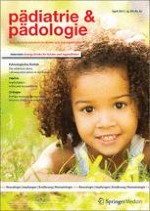Anzeige
01.04.2015 | Originalien
Echte und vermeintliche Impfschäden
Erschienen in: Pädiatrie & Pädologie | Ausgabe 2/2015
Einloggen, um Zugang zu erhaltenAuszug
In den Medien wird über „Das große Dilemma: Muss man impfen?“ meist kontroversiell berichtet: „Warum werden die Europäer immer impfmüder? Zwar lässt die große Mehrheit ihre Kinder noch impfen, das aber mit einem immer schlechteren Gefühl.“ Das wahre Dilemma ist: Die Risikowahrnehmung steigt mit dem Erfolg der Impfprogramme:-
Die Toleranz von Impfnebenwirkungen bei Gesunden ist viel geringer als die von Medikamentennebenwirkungen bei Kranken.
-
Mit dem Rückgang von Krankheiten verlagert sich die Risikowahrnehmung von „augenscheinlich nicht vorhandenen“ Krankheiten zur „bezweifelten“ Sicherheit der Impfungen.
-
Die öffentliche Verbreitung des Verdachts auf Nebenwirkungen führt zu einem Vertrauensverlust. Der Vertrauensverlust führt zum Rückgang von Durchimpfungsraten mit erneuten Krankheitsausbrüchen.
-
Neue Impfungen verstärken die Aufmerksamkeit für mögliche Nebenwirkungen.
